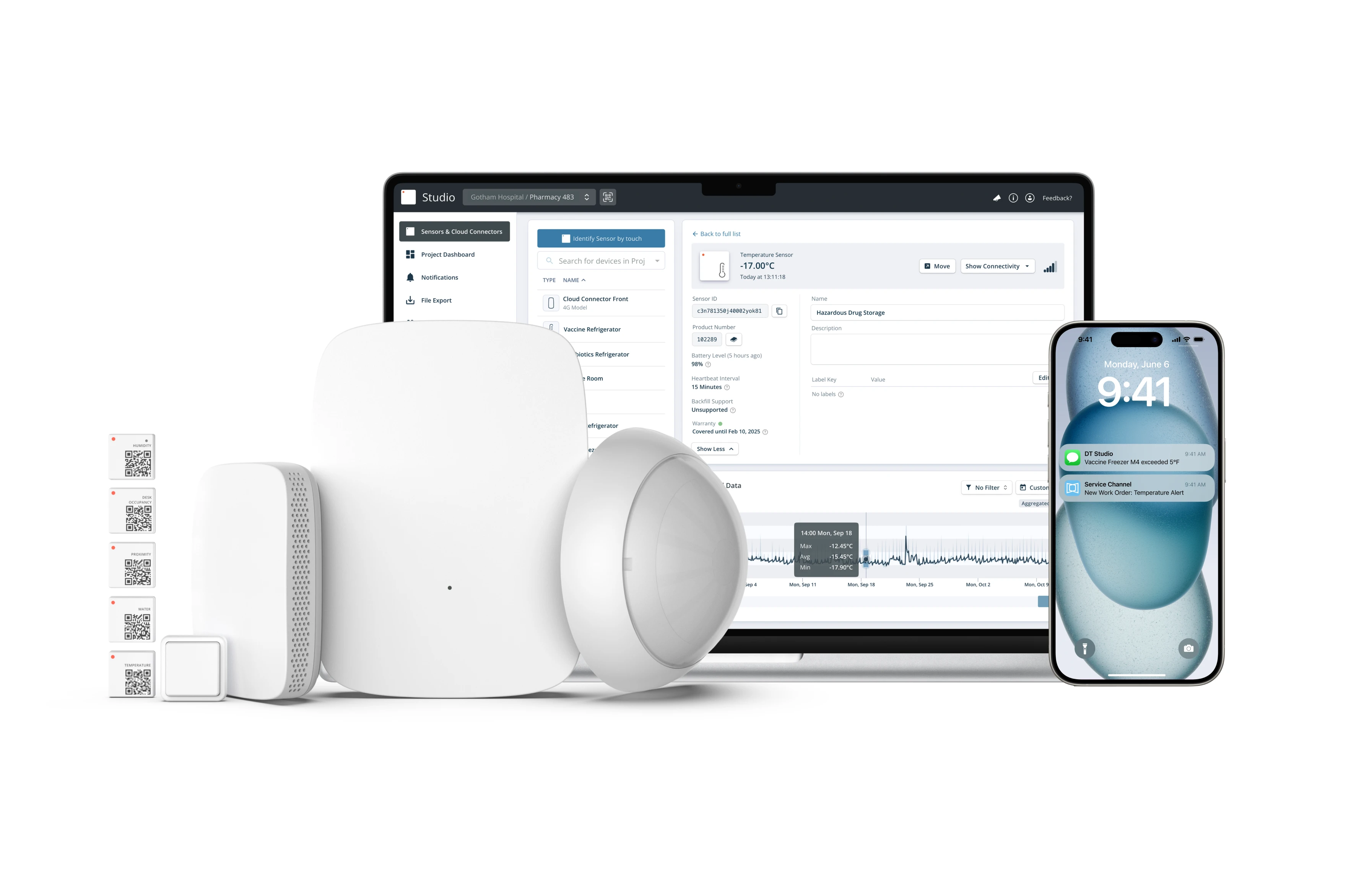Tiny Wireless Sensors Detect Water Leaks in London High-Rise Construction

While constructing a premium residential high-rise in the heart of London, the construction firm overseeing the project was experiencing a persistent challenge - water leakages. The company enlisted the expertise of Quensus, a leader in water management, to address the issue. Quensus employed cutting-edge Disruptive Technologies wireless water sensors to detect leaks and water damage. Throughout the remaining construction period, the system alerted the team to more than 4,000 potential water leak incidents, averting damaging and expensive consequences for the project.
The Importance of Early Leak Detection
Early detection of water leaks in buildings and at construction sites is critical, as there is a high chance they will go unnoticed until substantial damage has occurred. This is underlined by the statistic that England and Wales lose 3,031 million liters of water daily due to leaks (average 2019-2022). This issue costs UK insurance companies an estimated £1.8 million daily.
When confronted with numerous leaks during the initial phases of their residential construction project in central London, the construction firm turned to Quensus, a recognized authority in water management solutions. The leaks were not only disrupting the construction timeline but also posed a threat to the structural integrity of the high-rise, given its height of over 40 floors. Recognizing the urgency of addressing water leaks within an ongoing construction project, Quensus delivered a swift and minimally disruptive resolution.
The Solution

To address these challenges, Quensus installed a set of four high-pressure valves and three low-pressure valves at the building's base to regulate the flow of incoming boosted water. These automatic valves could be remotely controlled through the user-friendly FlowReporter application. In the event of a water leak, the wireless sensors immediately detected the presence of water and transmitted a signal to the Quensus software. This software, in turn, took swift action by triggering the shut-off procedure to the appropriate valve to stop the water flow while simultaneously notifying the designated personnel.
One or two Disruptive Technologies wireless water sensors were discreetly placed in each of the building's apartments, totaling 523 sensors throughout the facility. With a peel-and-stick design, these sensors could be easily affixed to virtually any surface, enabling the construction company to handle the installation by themselves. The sensors were labeled and attached to the corresponding valves, and access was granted to multiple users, all through the intuitive FlowReporter application. The sensors were grouped by floor to make it possible to monitor each floor separately.
The valve system, including water meters, tracked water consumption with Quensus' FlowReporter software, analyzing consumption. If there were anomalies, like a small but persistent water flow in a pipe were detected, the software sent a notification to alert the team.

Wireless Water Sensors Detected 4,000 Cases of Early Leaks
As a result of this proactive approach, from the installation in September 2021 until the completion of the construction project in January 2023, the company was alerted to a total of 4,000 leaks. These alerts were raised when water was detected in both the primary water pipes and identified within closed circuits like heating loops and air conditioning systems. Detecting this type of leak poses a unique challenge as they do not register on conventional water meters, typically found only on the boosted cold water pipe.
A Dual Benefit Solution
The solution provided by Quensus helped the construction company by mitigating two significant risks - building damage and construction delays. At the same time, it resulted in substantial water and wastewater savings and helped the construction company adhere to CIREG guidelines, BREEAM standards, and broader Environmental, Social, and Governance (ESG) compliance.
About the Disruptive Technologies Wireless Water Sensor
The main features that made these sensors perfect for Quensus and this particular construction project included their small size, straightforward installation requiring less than a minute per sensor, QR code identification for streamlined setup, and exceptional sensitivity and accuracy, facilitating the detection of leaks while avoiding false alerts.
The construction firm found the wireless water sensors from Disruptive Technologies sensors to be highly reusable, thanks to their impressive battery life of up to fifteen years. This meant the sensors could be re-used across multiple construction sites, preventing potential damage to numerous projects over an extended timeframe.
Bottomline
The successful implementation of Disruptive Technologies wireless water sensors, facilitated by Quensus, provided a pragmatic, reliable solution for safeguarding the construction project from water leaks. Having the solution in place for monitoring water leaks averted potential damage and construction delays, facilitating significant resource conservation and compliance with industry standards.

Data for Energy Optimization
Get Started




.png)

